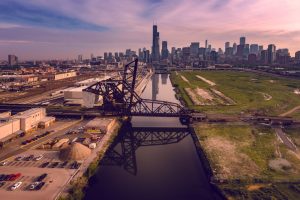Go to Page Section:

When someone gets hit by a car, thrown off a bike, and generally injured, most people assume that the law will handle things the same way, regardless of where the accident happened.
Injury is injury, right?
Well, not quite.
In personal injury law, where something happened can be just as important as what happened.
A case in downtown Chicago won’t play out the same as one in rural Illinois.
At first glance, it seems like it makes no sense, but think about it – laws change from state to state, judges and juries have different attitudes, and even the layout of a street where the accident took place has an impact on who gets blamed and how much money ends up on the table.
Any lawyer worth their salt knows this, but a great lawyer will build their entire strategy around it.
If you’re in this field (or you’d like to be), you have to understand how geography affects a case.
Why State and Local Laws Define the Legal Playing Field
Research published in the Clinical Orthopedics and Related Research Journal has shown that people who file claims for personal injury are usually dealing with something pretty serious, but that doesn’t automatically mean they’ll win their case.
The laws that impact a personal injury case can change a lot depending on where the accident happens.
Each state has its own rules when it comes to traffic laws and who can be held responsible.
For instance, some states follow comparative negligence, where both parties can share fault and still recover damages.
Others stick to contributory negligence, where if the injured person is even a tiny bit at fault, they might get nothing.
That’s a huge difference, and it affects everything from how a case is built to whether it’s even worth going to court.
States also set their caps on how much money someone can win, how much time they have to file a claim, and what they need to do before they sue (giving advance notice, going through mediation, and so on).
And on top of that, there are also local city rules to think of.
Some places require cyclists to wear helmets or demand that they stay in bike lanes.
If you break any of those rules and get hit, you might not be able to recover a lot of money.
But in another city that doesn’t have those laws about helmets or bike lanes, the case can go the other way.
Naturally, insurance is a big factor.
Some states have a no-fault system and require PIP (personal injury protection), which means that your insurance covers your injuries first, regardless of who caused the crash.
Other states have liability coverage, where you can’t get paid before you prove who’s at fault.
The Court System and Legal Culture
The court system is a culture that changes depending on where you are (reside or are currently located).
The attitude of juries, local norms, and even how people perceive lawsuits can affect how a case plays out.
In big cities, jurors are likely more familiar with, for example, bike traffic, and they’re more sympathetic to riders injured on busy roads.
In smaller towns, cars dominate the roads and cyclists are less common, so juries might be quicker to side with drivers.
This means that a Rockford bicycle accident lawyer shouldn’t have the same strategy as one from Arthur or Toulon.
Rockford is a city with almost 150,000 people living in it, while Arthur/Talon are rural towns (population 1000-2000).
So, Rockford will have bike lanes and more traffic lights/intersections, meaning more collisions, while in rural towns, cyclists are in more danger, even though there are many fewer of them.
Cities also (probably) have traffic cameras, while you won’t find many (if any at all) in smaller towns.
Whatever the case, a lawyer has to understand how residents see cyclists, what kind of arguments work with those specific people, and how to lay out the case so that it reflects community values.
The speed of the court itself is another factor to consider.
Some jurisdictions are backlogged with cases, so things can drag out for months or even years.
If that’s the case, the delay usually makes both sides more open to settling, just to avoid the wait.
On the other hand, if the court is faster-moving, attorneys might be encouraged to push for a trial.
Then there are resources; in cities, you have easier access to expert witnesses, accident reconstruction specialists, or niche legal professionals.
In rural regions? Not so much.
There, lawyers might need to bring in help from the outside, which makes the case more expensive, and it also affects how the strategy will be planned.
Overall, there are more than just facts that play into legal success.
It’s also about how those facts land in a specific courtroom, with a specific audience, in a specific place.
Conclusion
Knowing the law is just one of the steps to being a successful lawyer, and creating an effective strategy takes many things into account, including geography.
Geography is a big part of the legal strategy because laws change from state to state, courts all work at different speeds, and the people who sit on juries all have their local values, which shape how they see blame, fairness, and responsibility.
In short, you need to know it all to win. You have to know how the law plays out here, with this judge and these jurors.
It’s a lot of work, but if it were easy, everyone would be successful.


Leave a Reply